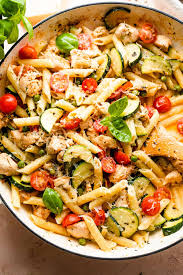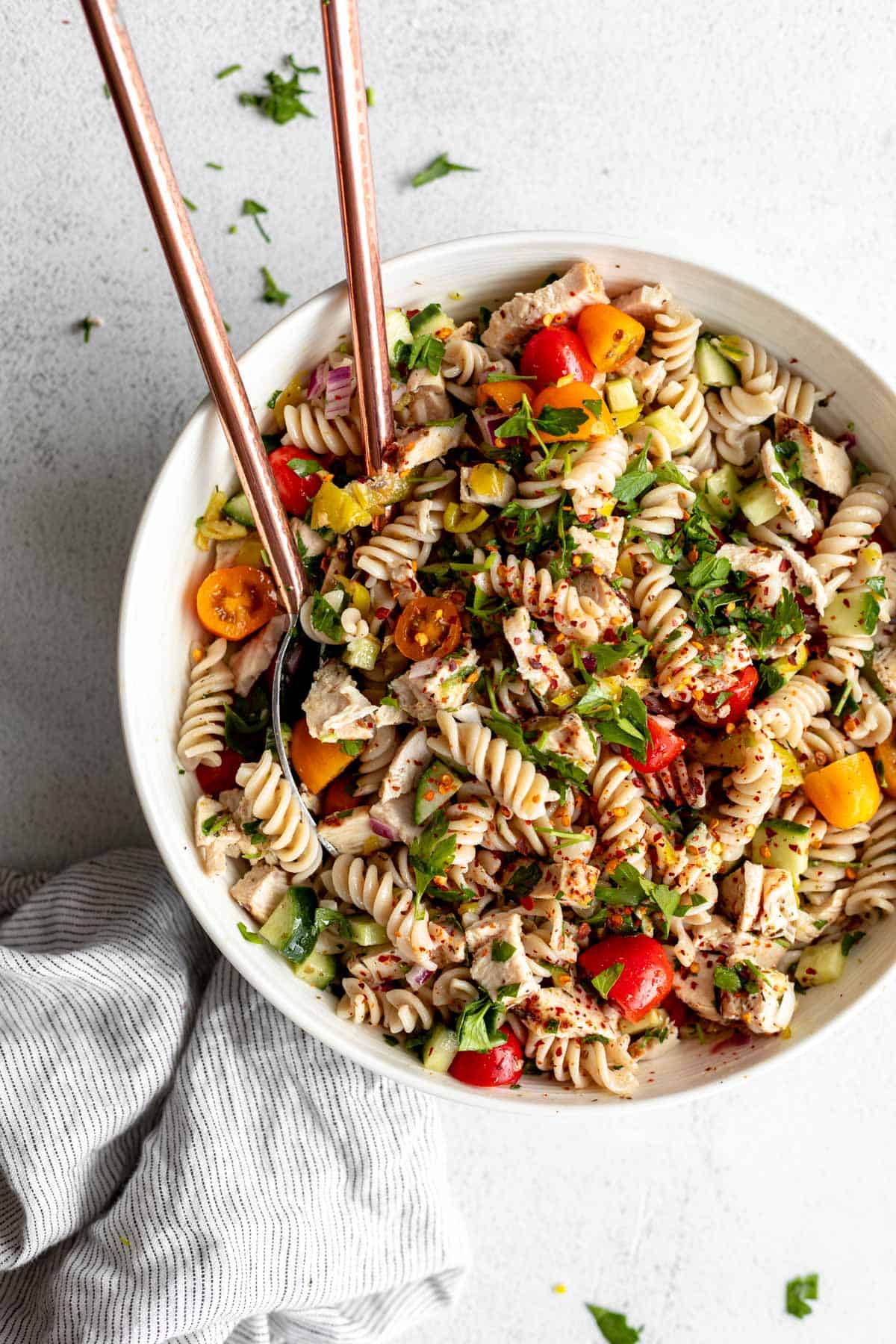Buddha Bowls with Charred Shrimp and Pesto: A Tasty and Healthful Supper
A nutritious, well-balanced dinner that looks as nice as it tastes can be enjoyed in Buddha bowls. These bowls, which combine grains, protein, vegetables, and healthy fats, are a fantastic way to try out various flavors and textures. Adding grilled shrimp and a rich, herbaceous pesto sauce is one of the most inventive ways to make a Buddha bowl even better. This dish is elevated to a really delicious supper by the combination of the colorful pesto and smoky, slightly crispy prawns.
Why Buddha Bowls with Charred Shrimp and Pesto?
This dish is an experience rather than merely a meal. Let’s examine why this combination is so effective:
- Flavor Balance The pesto gives a fresh, herbaceous punch that wonderfully balances the charred shrimp’s smokey, savory flavor with a hint of caramelization. When combined, they produce a vibrant flavor profile that is far from tasteless.
- Nutrient-Dense: Low in calories but high in vital nutrients such as selenium, B vitamins, and omega-3 fatty acids, shrimp is a great source of lean protein. Packed with antioxidants and good fats, the pesto is created with fresh basil, almonds, and olive oil. You get a meal that is high in fiber, vitamins, and minerals when you combine it with a vibrant assortment of veggies and entire grains.
- Customization: Buddha bowls are incredibly customisable, which is one of its best features. You may readily change the ingredients to fit your nutritional requirements or tastes, whether you’re searching for extra vegetables, grains, or even a different protein. Because of this, the dish can be served at almost any event.
Components of Buddha Bowls with Charred Shrimp and Pesto
What you’ll need to make this beautiful Buddha bowl is broken down here:
Regarding the Shrimp:
Shrimp (deveined and peeled): Approximately 1 pound (serves 2-3)
Olive oil: Cayenne pepper: optional, for a hint of spice; Paprika: 1 tsp, for smokiness; Garlic: 2–3 minced cloves; Salt and black pepper: Lemon: To taste: For a burst of freshness
Regarding the Pesto:
Pine nuts: 1/4 cup (or substitute walnuts or almonds) – Garlic: 2 cloves – Fresh basil: 2 cups, packed
Grated Parmesan cheese (optional for vegan version): 1/2 cup
Lemon juice: 1 tablespoon; Olive oil: 1/2 cup; Salt: To taste; Pepper: To taste
For the bowl, use cooked farro, brown rice, or quinoa as the grain basis (approximately 1 cup per serving).
Veggies: Pick from roasted sweet potatoes, avocado, cucumber, cherry tomatoes, and leafy greens like kale or spinach, among other fresh veggies.
**Garnish with seeds (such as sunflower or pumpkin seeds), almonds, and microgreens.
Comprehensive Guidelines
1. Get the Shrimp Ready
- Combine the shrimp, olive oil, cayenne pepper, paprika, chopped garlic, salt, and black pepper in a bowl. To allow the spices to seep into the shrimp, marinate them for 15 to 20 minutes.
- A skillet or grill pan should be heated to medium-high heat. To make the shrimp pink and somewhat burnt, add a little olive oil and cook them for two to three minutes on each side. Cook on a grill for one to two minutes on each side. Don’t be scared of some browned edges; a little char adds taste!
- After the shrimp are cooked, drizzle them with fresh lemon juice and let them rest.
- Prepare the Pesto
- Put the pine nuts, garlic, fresh basil, and Parmesan cheese (if using) in a blender or food processor.
- Pulse, scraping down sides as necessary, until everything is finely chopped.
While the processor is operating, gradually add the olive oil until the pesto reaches the consistency you want. It should have some substance yet be smooth. - Add lemon juice, salt, and pepper to taste and adjust.
3. Get the veggies and base ready –
Follow the directions on the package to prepare the grain of your choice. The light and fluffy texture of quinoa makes it a popular choice for Buddha bowls, but farro or rice would also work well.
- Cut the vegetables you want to use into slices. Roasted sweet potatoes, avocado, cucumber, and cherry tomatoes are all excellent choices that give the bowl some color and nutrients. To bring out the flavor and soften the leafy greens, massage them with a little lemon juice and olive oil.
4. Put the Buddha Bowl together.
To begin, put the cooked grain in the bowl’s bottom. This creates the foundation and provides a solid base for the remaining elements.
For visual appeal, arrange your grilled shrimp, fresh vegetables, and grains in a circle or divided pattern.
Drizzle a liberal amount of pesto over the top, ensuring that the rich, green sauce covers everything. For added taste, you can serve some pesto on the side.
Add microgreens, nuts, or seeds as a garnish for crunch and texture.
5. Enjoy and Serve –
While the shrimp are still warm, serve right away. This dish is ideal for meal prep, a casual get-together with friends, or even a midweek dinner. Everyone will love this dinner because of its bright, fresh, and filling flavors.
Reasons to Try This Buddha Bowl
In addition to being really delicious, this Buddha bowl with charred shrimp and pesto provides a well-balanced combination of macronutrients, including fiber and complex carbohydrates from the grains and veggies, lean protein from the shrimp, and healthy fats from the pesto and avocado. This dish promotes a healthy way of living without sacrificing taste.
Success Tips- Pesto Variations:
If you don’t like basil, you may use kale, spinach, or arugula instead for a different taste. Additionally, you can try other nuts like cashews, walnuts, or almonds.
Vegetarian Option: Use roasted chickpeas, tofu, or tempeh in place of the shrimp to make this dish plant-based.
- Meal Prep: You can prepare meals with this Buddha bowl. When you’re ready to dine, put the bowls together after preparing the rice, shrimp, and pesto in advance.
Final Thoughts
Pesto and charred shrimp Buddha bowls are a delicious, filling dish that is simple to adapt to your dietary requirements and personal preferences. The mix of the creamy, fragrant pesto, fresh vegetables, and smokey shrimp is simply amazing. This recipe will quickly become a new favorite in your rotation, whether you’re eating it for lunch or as a quick weekday supper.


